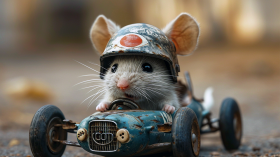Sea turtles are reptiles that can be found in different parts of the world. These marine turtles are known for living a long time and even outlived the dinosaurs for millions of years. However, these shelled animals face various natural and anthropogenic challenges when it comes to their survival. For the last 200 years, human activities have threatened the survival of these ancient mariners, according to the World Wildlife Fund (WWF).
Aside from threats posed by humans and natural predators, sea turtles are facing another emerging environmental risk: plastic pollution. In a report on Tuesday, March 12, scientists have been analyzing the guts of dead sea turtles in the Mediterranean Sea, where they found hundreds of plastic items. One of the turtles ingested rubber witch's finger Halloween toy. The findings are according to a 2024 study on plastic pollution in the eastern Mediterranean.
Plastic Pollution Threat
(Photo : Photo by Randall Ruiz on Unsplash)
Plastic pollution has long been attributed to the increasing number of dead sea turtles worldwide. Although the survival rate of a young marine turtle into adulthood is very low, plastic materials are exacerbating the current threats to the turtles. According to the Sea Turtle Conservancy, thousands of hatchling turtles arise from their nest along the coastline of the Southeast US and enter the Atlantic Ocean. The destruction of sea turtle eggs and natural challenges that they will face are key factors to this struggle.
However, it is estimated only 1 in 1,000 to 10,000 will survive and make it into adulthood. In terms of sea turtle deaths, 150,000 turtles from all species are killed in shrimp trawls, based on global estimates of annual capture, injury, and mortality, according to the conservancy. In addition, 22% of sea turtles have a chance of dying after eating one plastic item, according to a CSIRO report as cited by the Ocean Blue Project.
Also Read: Sea Turtles Threatened By Plastic Pollution, Researchers Say
Sea Turtle Ingests Halloween Toy
In the study published in the journal Marine Pollution Bulletin, researchers examined 135 loggerhead turtles (Caretta caretta) that were either washed up ashore or killed as bycatch in fishing nets off the northern waters of Cyprus. The assessment found over 40% of the turtles containing macroplastics on their guts. One sea turtle ingested a Halloween toy from an apparent child's costume, it was reported on Monday, March 11.
The research paper was led by the University of Exeter and the North Cyprus Society for the Protection of Turtles. The paper's authors include Dr. Emily Duncan from the University of Exeter. The study concluded that loggerhead turtles are a potential bio-indicator that could help the scientific community further understand the magnitude and scope of plastic pollution.
According to the United Nations Environment Programme (UNEP), an estimated 1,000 rivers are responsible for almost 80% of annual riverine plastic emissions into the ocean worldwide. The plastic pollution ranges between 0.8 and 2.7 million tons each year. Among these inland waters, small urban rivers are the greatest contributor to the pollution, the UNEP adds.
Related Article: Plastic Pollution: Autopsy Reveals Plastic Ingested by Dead Turtles in UAE
© 2024 NatureWorldNews.com All rights reserved. Do not reproduce without permission.





